Categories: Featured Articles » Home automation
Number of views: 7337
Comments on the article: 0
Popular Z-wave smart home device devices
Wireless automation systems based on Z-Wave are confidently strengthening their positions in the areas of home and office optimization, which is not at all surprising, because these systems are flexible and affordable. And the operating frequency of 869 MHz is allowed, and will not bring any trouble to the owner of such a system (radio frequencies, frequencies of cellular networks and Wi-Fi will not cause interference).
So, Z-Wave wireless standard allows you to automate the management of home and office equipment, bringing only additional comfort to the daily life of a modern person.
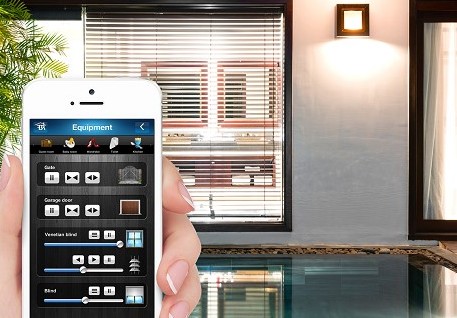
The technical side of the technology is very attractive: indoor communication at a range of up to 25 meters and up to 50 meters in open space. Moreover, the use of routing through network nodes allows the user to eliminate the need for direct visibility between sources and receivers of signals.
One controller is capable of covering more than 200 square meters of area or more than 450, if we are talking about a three-story building, for example. If the area is even larger, just add controllers. At the same time, device management is carried out from a tablet or from a smartphone through a special application.
The open (API) interface of Z-Wave controllers makes it very easy to integrate them into other automation systems, and if the needs of the owners change, the system can easily be expanded or individually modified.
Devices are simply mounted in junction boxes or in socket boxes without the need to lay additional wiring, since they are powered by a 220 volt household network, and some by batteries.
Sometimes the use of solutions based on radio communications is the only way out - there is not always the opportunity (or desire) to make additional wiring for each new device.
Next, we’ll look at several popular Z-Wave devices that are suitable for both smart homeso for the office.
Home climate management
Using thermostats and relays based on Z-Wave, you can easily create comfortable conditions in the home. When the temperature drops, the relay will turn on the boiler, and it will work until the air in the house warms up to the required temperature set by the user.
You can set additional conditions, for example, if one of the residents is present in the house, then the heating temperature will be one, and if you just need to maintain some minimum heat, the temperature will be different.
Or, depending on the time of day, the heater will turn on and off even taking into account the given schedule. Here is a way to save energy.
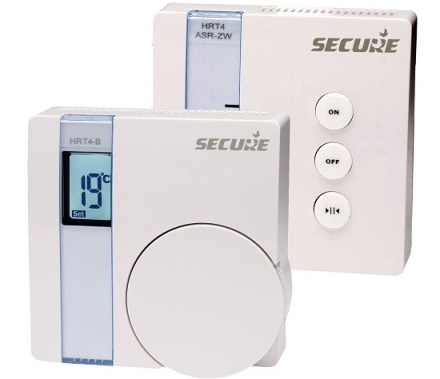
An example is HRT temperature control and water heating control system. A thermostat is installed on the wall, which controls the relay, which in turn turns the electric boiler on or off. The transmitter here is the HRT4-ZW thermostat, on which you can even manually set the temperature by rotating the control wheel on its panel.
On the case there is a display of an electronic thermometer, looking at which, a person will be able to assess the clarity of the system. The thermostat in the Z-Wave system is a controller, and is powered by a pair of pinky batteries.
When the temperature is lower or higher than the set temperature, the thermostat turns on or off the HRT4-ASR-ZW relay mounted on the heating device. All control is carried out taking into account the schedule and additional conditions from the central gateway Z-Wave or manually. The relay contains indicator LEDs reflecting the current state of the relay and, accordingly, of the heating equipment.
The design of the relay is quite aesthetic, which allows installation in a conspicuous place without compromising the interior of the room.The maximum switched current is 3 amperes. If the power of the device is greater - just add a contactor - it will control the contactor. The relay in the Z-Wave system is a routing executive unit, and is powered by a 220 volt utility network.
Daylight and louvre control
With Z-Wave devices, it is possible to create scenarios so that at a certain level of illumination, the blinds automatically fall. At the same time, the air conditioner may turn on, the boiler will turn off, etc.
Analysis of data from sensors and a schedule will also help to more accurately specify the scenario, you can even rely on weather forecasts, so that overall climate control would work proactively.
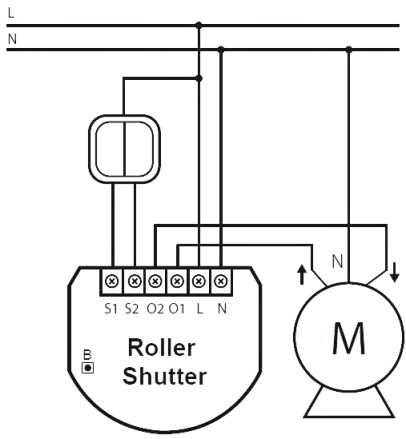
Blinds on windows and doors, blinds on projectors and screens - all this can be reduced to control two operating modes of drive motors - up or down, in fact - to analog control in accordance with the schedule and with digital commands received from the controller.
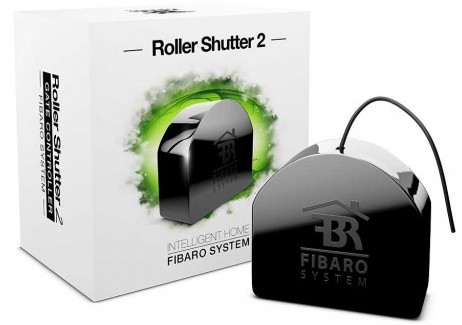
An example is Fibaro Z-Wave Roller Shutter 2 FGRM-222 remote control unit for blinds and curtains.
This device is itself capable of determining the current position of the drive for blinds or curtains, shutters, etc., and can, according to a user-specified scenario, power an engine with a capacity of up to 1 kW from a 220-volt household network. For all this to work, it is enough to have a motorized drive for the blinds and such a controller to interact with the Z-Wave network.
Artificial light control
For the formation of light scenes, depending on the circumstances, special routing Z-Wave light controllers are used. By analyzing information from light sensors, by current brightness, by the presence of people, by schedule, you can create light of a certain intensity, a certain color, for a given time interval, etc.
Here, Z-Wave dimmers and switches are simply irreplaceable, capable of not only turning on and off, but also regulating the brightness of incandescent lamps, and in some cases led bulbs.
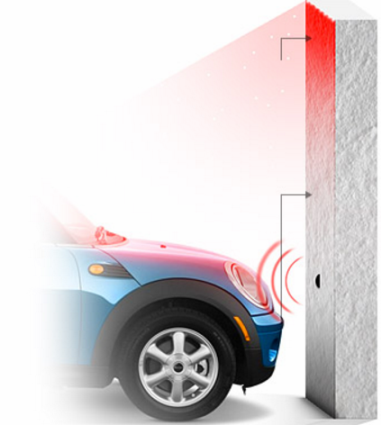
Such switches or dimmers are available for installation in a junction box or for wall mounting. They feed on a two-wire or three-wire circuit. A two-wire neutral wire is absent, there are only incoming and outgoing wires from the box, and for operation a minimum load is required, which must be connected.
The three-wire system has a neutral wire, and the supply wires are separated from the load wires. Sometimes light controllers generally look like a simple wall switch, however, the device receives commands using the Z-Wave protocol.
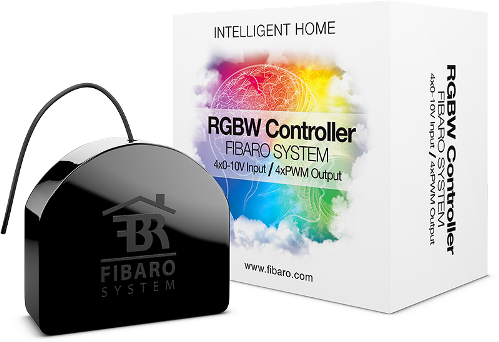
An example is RGBW controller (Red Green Blue White) for LED strips from Fibaro. This device is able to fully control LED strips, both single-color and multi-color.
It is enough to install it under the switch, and the brightness and color can be controlled with a potentiometer or from sensors (there are 4 analog inputs) of wind, light, distance, pressure, etc. with a voltage of 0 to 10 volts. The variety of visual effects that can be created in this way is limited only by the user's imagination.
Powered by RGBW controller from LED strip power supply, and can give up to 6 amperes per channel, with a maximum total load power of 228 watts (at 24 volts).
See also at e.imadeself.com
:
